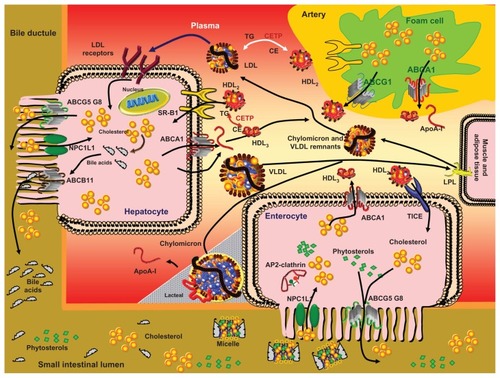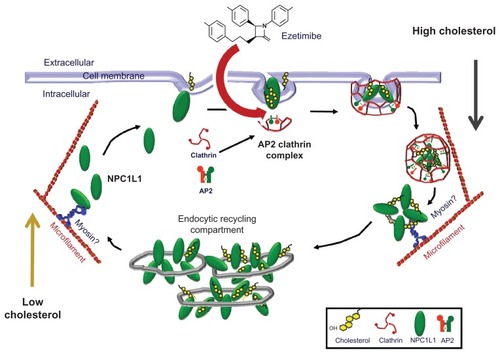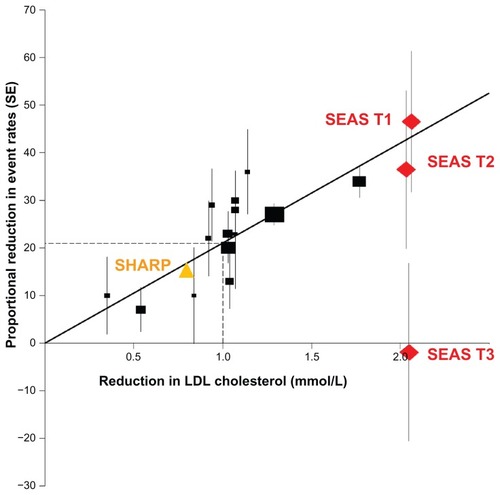Figures & data
Figure 1 Lipid and lipoprotein metabolism.
Abbreviations: ABCA1, ATP-binding cassette transporter A1 (cholesterol efflux); ABCG1, ATP-binding cassette transporter (cholesterol efflux); ABCG5, ABCG8, ATP-binding cassette transporters G5 and G8 (sterol efflux); ABCB11, ATP-binding cassette transporter B11 (bile export pump); AP2, adaptor protein 2; ApA, apolipoprotein A; CE, cholesteryl ester; CETP, cholesteryl ester transfer protein; HDL2, larger HDL species; HDL3, smaller HDL species; IDL, intermediate-density lipoprotein; LPL, lipoprotein lipase; NPC1L1, Niemann–Pick C1-like 1 protein; SR B1, scavenger receptor B1; TG, triglyceride; TICE, transintestinal cholesterol efflux (putative receptor); VLDL, very low-density lipoprotein.

Figure 2 Effect of ezetimibe on NPC1L1-mediated internalization of cholesterol.
Copyright © 2008, Elsevier. Adapted with permission from Ge L, Wang J, Qi W, et al. The cholesterol absorption inhibitor ezetimibe acts by blocking the sterol-induced internalization of NPC1L1. Cell Metab. 2008;7:508–519.Citation41
Abbreviations: AP2, adaptor protein 2; ERC, endocytic recycling compartment; NPC1L1, Niemann–Pick C1-like 1 protein; PM, plasma membrane.

Figure 3 Proportional reduction in major ischemic events by mean decrease in LDL-C (mmol/L) in the Simvastatin and Ezetimibe in Aortic Stenosis (SEAS) trial (tertiles 1, 2, and 3 for severity of aortic valve stenosis) compared to 14 randomized trials in the Cholesterol Treatment Trialists meta-analysis.
Copyright © 2010, Elsevier. Adapted with permission from Holme I, Boman K, Brudi P, et al. Observed and predicted reduction of ischemic cardiovascular events in the Simvastatin and Ezetimibe in Aortic Stenosis Trial. Am J Cardiol. 2010;105:1802–1808.Citation104 The Study of Heart and Renal Protection (SHARP) data point is based on Baigent et al.Citation65 1 mmol/L approximates to 39 mg/dL of LDL-C.
